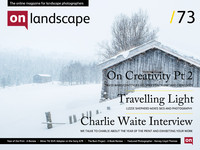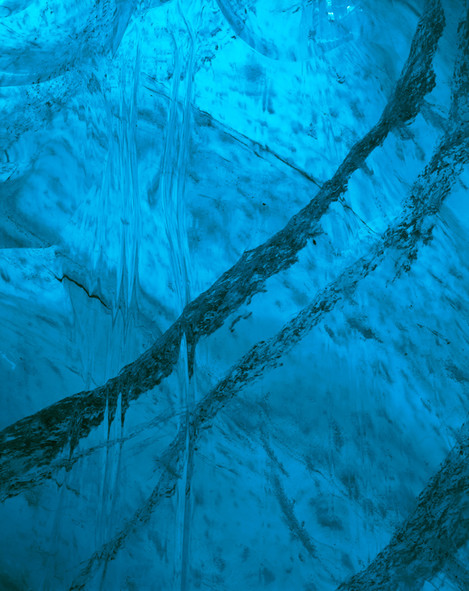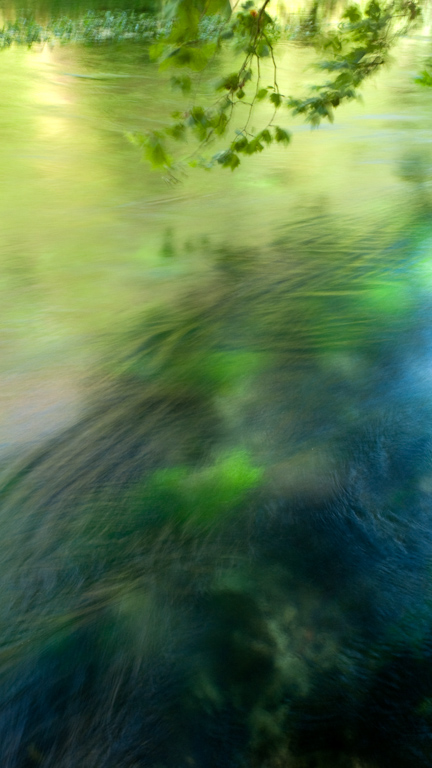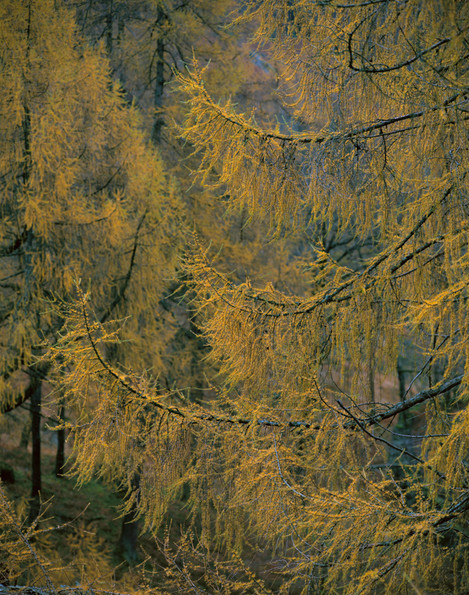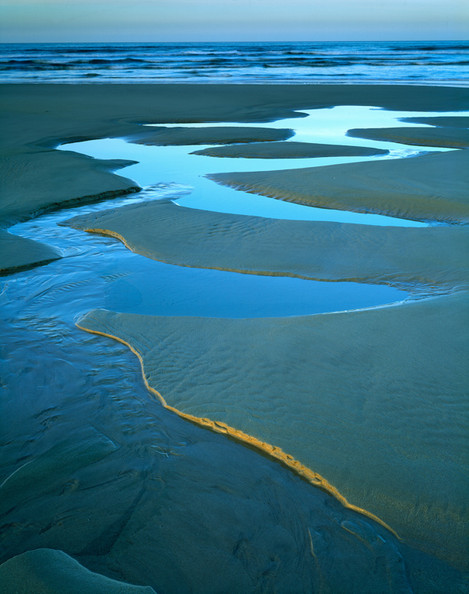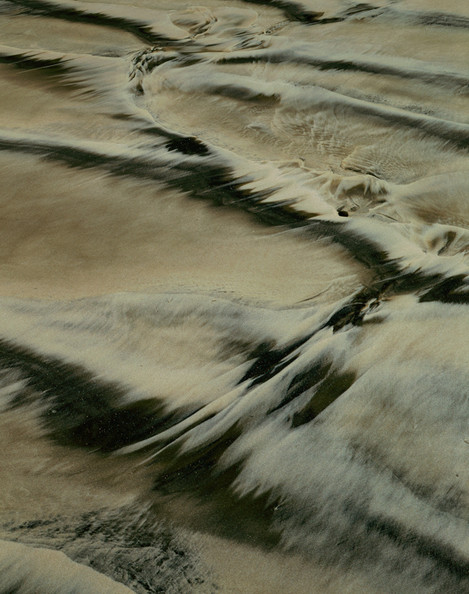Part 2: Getting in the Flow…

David Ward
T-shirt winning landscape photographer, one time carpenter, full-time workshop leader and occasional author who does all his own decorating.
In part one of this article I looked at the psychological processes that underlie creativity and introduced the notion of flow. I tried to make it clear that creativity is an everyday part of human existence and not exclusively the domain of ‘gifted’ individuals. I don’t pretend to be an expert but it seems plain to me that humans have developed creativity because it has an evolutionary benefit. As history has repeatedly shown, creative leaps of the imagination can lead us to solve what had previously seemed ‘insoluble’. These solutions can lead to better living conditions for individual humans and the species as a whole – though, sadly, not always for the benefit of our neighbours on Earth. Creativity is not limited to artists, it’s a fundamental aspect of human psychology and appears in all walks of life. Scientists and artists – who appear on the surface to have very little in common – share the common tool of creative thought, though they differ in intent. There isn’t a single aspect of human existence that hasn’t at some stage benefited from a little creative thought. The scientists and inventors use it to gain practical advantages but artists use it to enrich our lives in less palpable but nevertheless equally positive ways.
In this article I want to explore how we might more easily access the heightened state of creativity that comes through flow. Flow is something that we are all capable of through concentrated application. By concentrated I do not mean the kind of furrowed brow, pained expression that might have the caption ‘Thinking!’ appended to it, but rather a calm exclusion of irrelevances - a state oddly more akin to peaceful daydreaming.
Many photographers, as well as other artists, have described this heightened state of awareness. The American photographer, Minor White, equated the preferable state of mind to that of an unexposed piece of film, static and seemingly inert yet pregnant with possibilities, ‘so sensitive that a fraction of a second’s exposure conceives a life in it.’ In an unconscious nod to notions of divergent thought, he suggested that any image might feasibly be formed upon the film (or sensor) and we should be ready to equally accept what passes in front of our eyes, not blinkered by convention or expectation.
Before I describe how we might achieve this I want to write a little about the importance of practice.
Just taking photographs is one way to get into the flow. Over many years I have witnessed Joe Cornish do just that. When arriving at a location new to him, he will spend some time studying his surroundings then start making images. This is a process I call sketching. Each image forms a part of directed play - and may also be a stepping-stone to flow. But I think it’s important to point out that Joe is a master craftsman. For him, the camera is no longer something that stands between his mind and an image, it has simply become the conduit for the image he imagines. Whereas, for less practiced individuals, operating the camera can interrupt the acquisition of flow. This is because self-reflective thinking ("What aperture do I need?", "Where am I focused?", "I need to stop down!", or any one of a hundred other questions…) can inhibit us from entering flow. Once in the flow these questions become part of the focused task.
But we need to enter it first.
I think that there’s a universal problem here. Let me explain it by contrasting Joe’s ease with a DSLR with my unease. When I use rigid bodied DSLR cameras I find it much harder to enter flow. For me, there are two obvious reasons:
Because I’m not as familiar with DSLRs as with a view camera; manipulating them involves tasks I’m not used to such as navigating a menu tree – I have to consciously think how to do things!
And because the ritual I’m familiar with is absent (more about this in a moment).
Both are different aspects of my unfamiliarity with the camera. They are only difficulties because I almost exclusively use a view camera. Joe can enter the flow through making images with a DSLR because he is practiced. And practice is the key!
He uses his cameras (of whatever format) many times a week and sometimes many times a day for weeks on end. Most of us don’t practice that much. If you wanted to play a violin concerto wouldn’t you expect to have to practice every day? Yet we get frustrated when we can’t make good images on the day we pick up a camera for the first time in weeks. If you want to enter flow easily the camera must not be something that you have to puzzle over, you need to be completely familiar and at ease with it. And that takes practice. Rather than thinking of photography as something you do on a special occasion, think of it as something that is an everyday part of your life. Once a day, pick up the camera and play with it. Think of this as practicing your scales. You’re not trying to produce a virtuoso performance, you’re trying to hone your skills and make the camera an extension of your mind’s eye. You don’t have to be in a special photographic place, a hallowed location, to do this. You can do this anywhere, even in your kitchen.
Dos and don’ts…
As I mentioned earlier, it’s hard to exclude everyday irrelevances from our minds when we make photographs. I know that they often crowd in and disrupt my ability to enter the flow state. After many years of trying to find an easier way into flow, I have come up with three guiding principles, one prescription and two proscriptions. Let’s start with the ‘do’.
Develop a ritual…
Flow and meditation are closely allied states - indeed, being in creative flow has the same psychological benefit as meditation with the added bonus that you’re doing something creative. In Zen, and other meditative practices, rituals are often prescribed as a means to enter a meditation. So, it’s perhaps no surprise that rituals also work for entering the flow. Don’t worry, I’m not suggesting that you sit cross-legged and chant before making a photograph. The ritual can be something very simple, informal and undemonstrative. And it needn’t be long. The ritual bouncing of the ball by a tennis player before they serve is a good example. Sometimes they do it twice, then serve. But sometimes you see them hesitate and start the ritual again. It’s not because the ball bounced badly – that’s got nothing to do with the serve - they’re simply waiting until they’re mentally and physically settled.
Some photographers already have unconscious rituals that they go through when making a photograph. This might be something as straightforward as going for a walk in the landscape, or plugging in their headphones and listening to music on an iPod (although I confess that music makes it impossible for me to concentrate on making an image), or just sitting and staring. It’s not a fail-safe approach, but associating some simple task with making photographs can help you to enter the flow. You might try viewing your surroundings through a framing device such as a 35mm slide mount or piece of card cut in the appropriate proportions.
I consider myself lucky that working with a view camera involves working through a prescribed, ordered set of tasks; unfolding the camera, setting it on the tripod, donning the darkcloth, using the focusing loupe, opening the aperture and shutter, applying movements and working through the iterative process of focusing. These amount to a formal ritual. As I step through the process I can feel my visual perceptiveness increase as I relax into a ‘photographic’ frame of mind. I think that the darkcloth is a particularly important part of the ritual as it excludes irrelevant visual information. Under the hood, I am only aware of the image on the ground glass, the surrounding visual context is lost to me. I operate the camera by touch, as musicians do with their instruments. I feel the positions of the camera. There are no distracting menus to scroll through to pick settings, no text to read and process with my conscious mind. I find that I can let my subconscious dominate.
Don’t rush…
Many people seem to feel that they have to make a photo NOW! But placing a time pressure on yourself is almost guaranteed to keep you out of the flow. On photo tours and workshops, the pressure sometimes comes because this might be the only opportunity someone gets to make an image at a particular place. I sympathise with this desire to come back from the hunt with a prize but know that rushing isn’t the way to get first prize.
Of course, the light and the landscape also exert a time pressure: we look out and notice that a cloud will be in just the right position in a few moments and rush to capture it; we see that the sun will soon set and rush to make an image; we see the light flowing across a mountainside and - realising that rain will soon be upon us – rush to pick up the camera… As a wise Yorkshire woman recently said to me, "Dear me, we’re all of a gallop!" It’s very hard not to react to these external pressures but experience has taught me that my images are better if I can resist the temptation.
One participant’s tongue in cheek feedback from my webinar in February was, "I now know that wandering randomly around is a key technique I need to master." That’s frequently what I do, so he’s actually perfectly correct! People sometimes ask me if I feel that I’m missing out on images, by only making a handful a day on the 5x4 as opposed to their tens or even hundreds of frames? The answer is no, I don’t. I decided long ago that I’d rather make fewer images but try to make them count.
Once I’ve found a subject that excites me, I often walk around it for ten or fifteen minutes before I pick up a camera. In that period I’m tuning out of any irrelevances and tuning in to the subject. Minor White suggested that, ‘If you could stop the shouting of your own thoughts in your ears, you might be able to hear the small voice of . . . a pine cone in the sun.’
If you’re struggling to see images, I recommend that you just sit and "be" for a while. Quietly contemplating your surroundings gives you time to really look at your environment, time to lose yourself and connect with its ambience. I strongly believe that time spent just sitting in these circumstances isn’t wasted; in fact it’s often the most productive thing you can do and will pay huge dividends.
Stay calm…
Don’t expect too much of yourself. This might seem like an odd thing to suggest; surely we’re constantly striving to make the best image that we can? Yes, but that doesn’t mean that we should expect to make a masterpiece on any one day or even once a month or once a year. Performance anxiety, setting your sights too high, is bound to exclude you from the flow. Your best work will almost certainly come unexpectedly. Always try and enjoy making a photograph for the simple pleasure it brings.
Another kind of anxiety arises from simply being in an amazing location, well known for its photographic potential. I’ve sometimes noticed participants on workshops being disappointed in the most incredible landscapes. This disappointment can blind them to possibilities and exclude them from the flow. Yosemite Valley, in California, is a perfect example. We all know Ansel Adams’ famous image, "Clearing Winter Storm’. It’s an incredible photograph of an epic moment. We should remember, however, that Adams lived and worked in Yosemite for seven decades and only made one image with such spectacular conditions. It’s completely unreasonable to think that we will find anything like that during a ten day visit. OK, it’s the Gates of the Valley at Yosemite – the landscape photographer’s Mecca! But it’s really just another place to find an image. We should treat all locations equally. Each is a place where we might make a good image. But there’s never any guarantee that we will. If we’re too in awe of a famous place we won’t be able to enter flow.
On any one day, your ambition should simply be to make an image to the best of your abilities. And it really doesn’t matter if you don’t make an image. Just being out and looking is part of the ongoing process of developing your aesthetic sense.
Anxiety can also arise from comparing ourselves to our peers or the photographic greats. It’s pointless even to think in terms of a league table. Art has no absolute points of comparison, only subjective ones. Comparing your work on a particular day to someone else’s - or even to earlier work of your own - is only going to make you feel anxious and unproductive. Both these feelings are enemies of the flow. Just try and be calm. Forget the past and ignore the future. Focus on now. In a sense, we are never more completely in the here and now than when we are in the flow. By ignoring irrelevances we allow ourselves to concentrate all our attention on the present.
In conclusion…
Flow was something that happened in my creative life long before I comprehended its significance. Twenty years ago I thought that it was just an odd state that happened from time to time. I couldn’t predict when it would happen but I knew that afterwards I would feel energised and fulfilled. Talking to other photographers, I realised that they too had experienced it. Like me, they found that flow often accompanied periods when they made what they considered to be their best work.
Of course, I’m not successful all the time. It’s not often acknowledged but our mental state is more important than anything else when we’re trying to find photographs. Mental barriers of one kind or another often make it hard to see images and impossible to get in the flow. Apathy, for instance, is quite a common barrier for me.
As noted in part one, we need to feel that a task presents a challenge in order to enter flow. So unless I can sense a degree of difficulty (such as some small promise of a novel solution to the eternal problem of composition) the camera is likely to stay firmly in the bag. But, perhaps the need to balance challenge and skill in order to achieve flow makes me more pernickety about what I shoot, and less likely to shoot the obvious. And being discriminating is, of course, also a vital part of the creative process.
Having studied Mihály Csíkszentmihályi’s research, I now have some deeper understanding of how commonplace flow is and how beneficial it can be. So, my advice would be forget about buying the latest bit of kit: change your mental state instead of your gear and it might just make you a better photographer.

